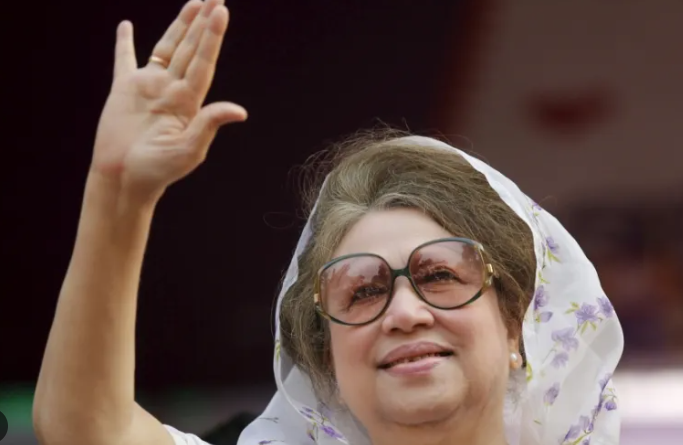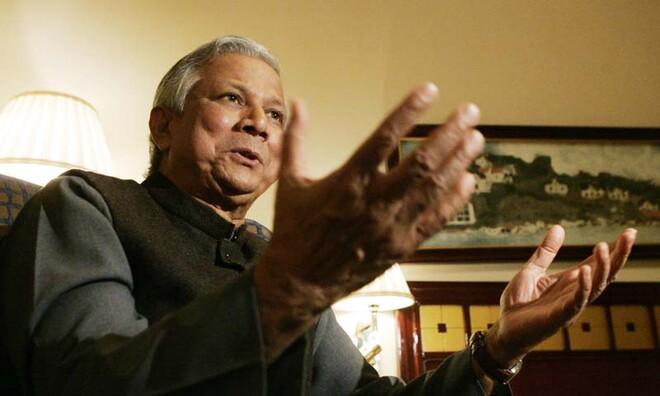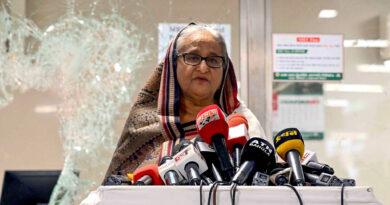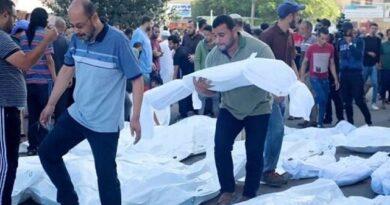Bangladesh Students Movement: No solution except our proposed interim government
Bangladesh President Muhammad Shahabuddin on Monday ordered the immediate release of the jailed former prime minister and chief of the main opposition party Bangladesh Nationalist Party (BNP) Begum Khaleda Zia.
The Bangladesh President’s order has come at a time when Prime Minister Sheikh Hasina Wajid, chief of Khaleda Zia’s staunchest opponent of the Awami League, resigned and went to India on Monday.
The President’s spokesperson said in a statement that in the meeting chaired by President Shahabuddin, it was unanimously decided that BNP chief Khaleda Zia would be released immediately.
No solution is acceptable except the interim government proposed by us: Student leaders
According to the newspaper “Daily Star” of Bangladesh, Naheed Islam, a leader of the student movement that organized the protests, said that he would present the features of the new interim government within the next 24 hours.
Addressing a press conference with other student leaders in Dhaka, he said, “I dedicate this victory to the students who lost their lives during this movement.”
We protestors are united against the fascist regime. There is no religious or other factionalism between us.
Naheed Islam further said that we have to remain united and avoid religious incitement and division. Protesters should stop this process.
On the other hand, the representatives of the protesting students have said that the power should be handed over to the proposed interim government of citizens and students.
He has emphasized that no other alternative than the proposed interim government will be acceptable and no escape will be given to the fascist forces and murderers.
America welcomes the announcement of the establishment of a transitional government
Reacting to the latest situation in Bangladesh, the United States has urged all parties to refrain from violent actions.
“We urge all parties to refrain from violence,” State Department spokesman Matthew Miller told reporters on Monday. A lot of human lives have been lost in the past few days. We insist on showing restraint in the coming days.
“We welcome the announcement of the interim government and stress that any transfer of power must follow the laws of Bangladesh,” added Mathew Miller.
On Monday night, the spokesperson of the Bangladesh Army said that the curfew in the country for 17 days is being lifted from Tuesday morning.
In a statement issued by the Public Relations Department of the Army, it has been said that the curfew will end at six o’clock on Tuesday morning. The announcement states that all offices, courts, educational institutions, and factories will be opened.
How did the student movement in Bangladesh remove Prime Minister Sheikh Hasina Wajid from power?
Student protests that began in July against the controversial quota system for government jobs ended on Monday with the resignation of Prime Minister Sheikh Hasina Wajid and the formation of a caretaker government by the fled-country army.
According to the French news agency AFP, at least 300 people have been killed in more than a month of protests to end the dictatorial rule of 76-year-old Prime Minister Sheikh Hasina.
Here are five key dates that show how protests toppled the government in the South Asian country of about 170 million people.
July 1: The blockade begins
University students staged barricades blocking roads and railway lines to demand reform of the quota system for public sector jobs.
He said that this scheme was used to reward the loyalists of Hasina Wajid’s ruling Awami League.
Hasina Wajid won a fifth term as prime minister after being voted out without real opposition in January. He said that the students are “wasting their time”.
July 16: Intensification of violence
The first deaths were recorded in the protests and six people were killed in the clashes. A day after protesters and government supporters in Dhaka threw sticks and attacked each other with bricks.
You May Also Like to Read:
Hasina Wajid’s government ordered the closure of schools and universities across the country.
July 18: Prime Minister reprimanded
The students rejected Hasina’s offer, a day after she appealed for calm and vowed that every ‘killing’ in the protest would be punished.
Demonstrators chanted ‘Get out the dictator’ and torched the headquarters of state broadcaster Bangladesh Television and dozens of other government buildings. The government shut down the internet.
At least 32 people were killed and hundreds injured in the clashes, which continued despite a 24-hour curfew and the deployment of troops.
July 21: Supreme Court verdict
Bangladesh’s Supreme Court, which critics see as a rubber stamp for Hasina’s government, ruled the decision to reintroduce job quotas illegal.
But the protestors were not happy with the decision and demanded that the jobs reserved for the children of ‘freedom fighters’ from Bangladesh’s 1971 war against Pakistan be completely abolished.
August 5: Hasina escapes
Hasina Wajid fled Dhaka by helicopter after thousands of protesters stormed her palace. Afterward, hundreds of thousands of people celebrated in the streets, some dancing on the roofs of armored vehicles and tanks.
His dramatic departure came a day after the deadliest day of protests in which at least 94 people were killed across the country, many of them in clashes with Hasina Wajid’s supporters.
In many cases, soldiers and police did not intervene to stop the protests, as happened during the rallies last month.
Bangladesh Army Chief General Waqar-ul-Zaman has said in a message to the nation on state television that Hasina Wajid has resigned and the army will form an interim government.





